Persimmons are prized worldwide for their unique flavor and nutrition benefits.
However, they might not always be available due to seasonality or personal preference.
This blog post will explore several alternative options to consider if persimmons are not an option for your recipes.
What Are Persimmons?
Persimmons are a type of edible fruit native to East Asia. They have a unique, sweet flavor often compared to honey or maple syrup.
Persimmons can be eaten raw, cooked, dried, or made into jams and jellies.
The fruits are often dried in Chinese cuisine and used in stir-fries, soups, and desserts.
Japanese cuisine often uses persimmons in sweet dishes such as cakes and custards.
They are commonly used in pies, jams, and puddings in the United States.
Persimmon juice can also be made into a refreshing beverage popular in summer.
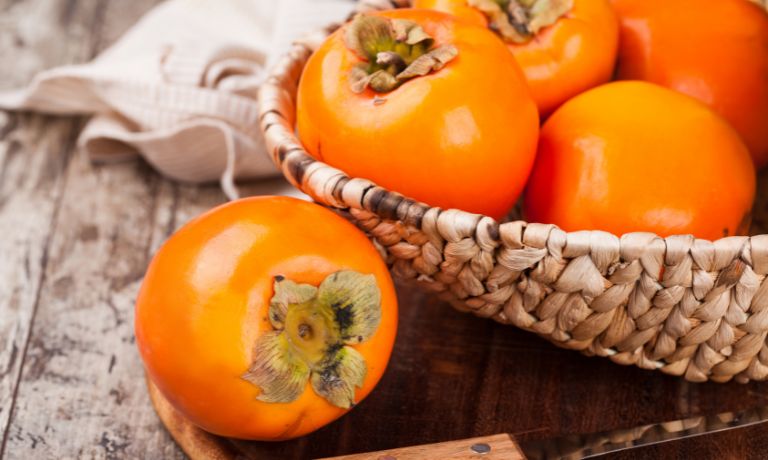
Substitutes For Persimmons
If you’re looking for a substitute for persimmons, many options are available.
Apricots
Apricots are small, round fruit native to many parts of the world.
It has a sweet flavor with hints of tanginess and can be easily recognized by its orange color.
Apricots are often used in desserts or as a snack, but they can also be cooked into dishes such as jams, competes, and chutneys.
They have a similar texture to persimmon and can add sweetness to dishes without overwhelming the other flavors.
Apricots are also much easier to find than persimmons, making them an ideal substitution for many recipes.
They can also be used in savory dishes, such as stews and salads, to add a hint of sweetness where persimmon wouldn’t work as well.
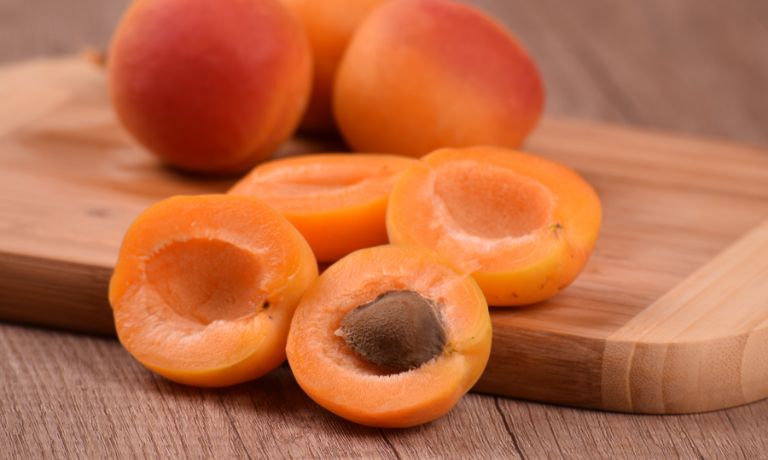
Sharon Fruit
Sharon Fruit, or Mandarin Melons or Santra Fruits, is a hybrid variety of the common persimmon fruit.
Because of their large size, firm texture and relatively mild flavor compared to regular persimmons, Sharon Fruits have become popular for cooking purposes.
They can be eaten raw or used in baked goods like pies, muffins and cookies.
They can also be grilled or sautéed with savory dishes such as stir-fries.
Sharon Fruit can provide a great flavor and texture similar to persimmons when used in recipes.
Additionally, their small size makes them ideal for chopping and cooking into smaller dishes where persimmons may be too large or cumbersome.
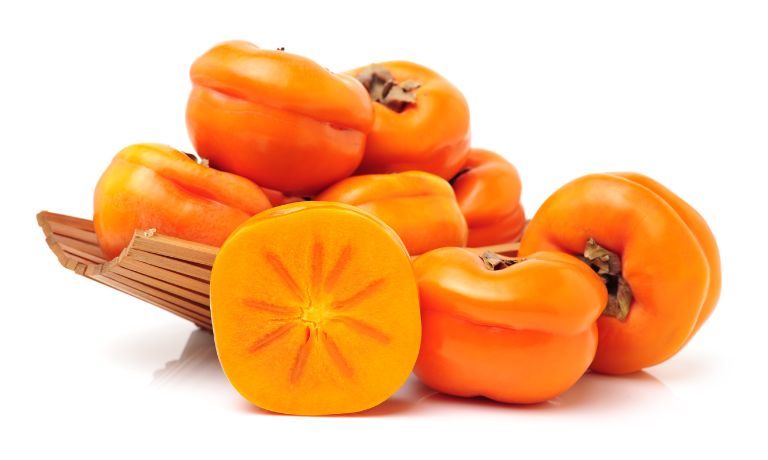
Pears
Pears are a type of fruit with a similar shape and size as persimmons but are more widely available.
They come in wide varieties with different colors, textures, and flavors.
Pears can be eaten raw or cooked. When used for cooking, pears can provide a sweet flavor similar to persimmons.
They can be peeled and pureed in pies, cobblers, crisps, or sauces. Pears are also a great source of fiber, vitamins, minerals, and antioxidants.
Additionally, they have low calories but high nutrient density, which makes them a great substitute for persimmons when trying to watch your diet.
Pears can be a great addition to any dish, whether you’re trying to add some healthy sweetness or simply switch up flavors.
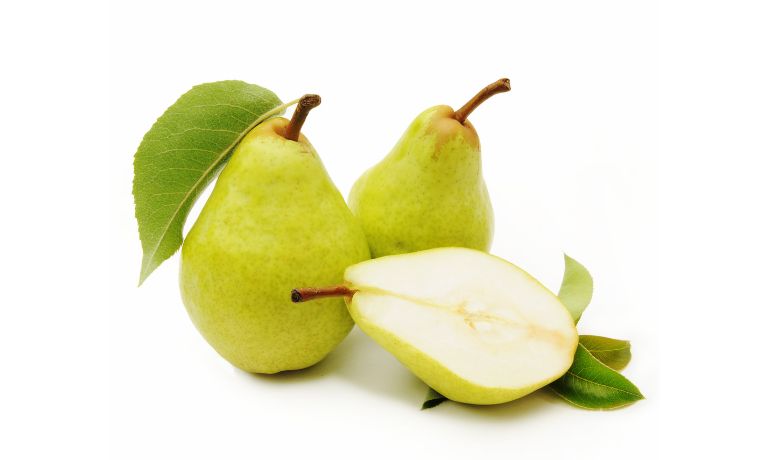
Fuyus
Fuyus are a type of persimmon that can be seen as an alternative to the classic Hachiya variety.
Fuyus are smaller than their Hachiya counterparts, and while they still have a sweet flavor, they don’t become mushy when ripe like the traditional persimmons.
This makes them ideal for cooking, as they can be sliced and used in salads or even cooked down into compotes.
Fuyus also retain their shape when cooked, so they are great for desserts like pies and tarts that require a firmer texture.
They can also be used to make jams, jellies, and preserves.
Lastly, Fuyus are much easier to find in supermarkets and grocery stores than traditional persimmons.
This makes them a great alternative for those struggling to find fresh, ripe Hachiya persimmons.
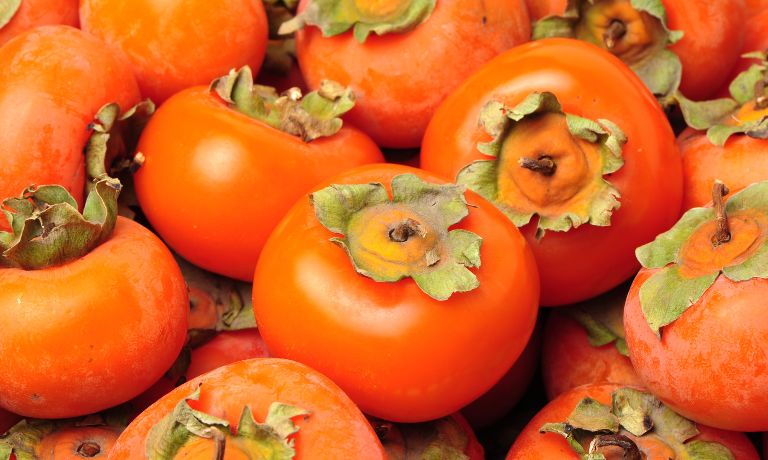
Quince
Quince is a type of yellow-green fruit native to the Middle East and Mediterranean.
They have been used in cooking since ancient times but have recently reemerged as a popular alternative to persimmons.
Quince has a unique flavor which is both sweet and tart, with notes of citrus, honey, and pear.
They can be used in various dishes, from desserts to savory main courses.
Quince can also be cooked down into a paste or jelly, perfect for adding sweetness to pastries and other baked goods.
Their firm texture makes them an ideal substitute for persimmons in recipes that require the fruit to hold its shape during cooking.
Additionally, Quince is lower in sugar than persimmons, making them a healthier option.
In addition to its flavor and health benefits, Quince is easy to find year-round in most grocery stores.
They can also be found at farmers’ markets or online specialty stores.

Plums
Plums are a type of edible stone fruit belonging to the genus Prunus. They have sweet, juicy flesh and come in many varieties.
Plums can range in color from yellow, red, purple and even black.
Most plums have a tangy flavor that pairs nicely with other recipe ingredients.
In some instances, plums can be used in place of persimmons.
Plums also offer nutritional benefits that may not be available in persimmons.
Plums are rich in Vitamin C, dietary fiber, Iron and Potassium, which make them a great choice for baking or cooking dishes.
It is best to use fully ripe fruits when substituting plums for persimmons, as they are sweeter and will provide more flavor.
Additionally, plums can be cooked or baked with other ingredients, such as spices and herbs to enhance their flavor.

Pineapples
Pineapples are a tropical fruit that belongs to the group of bromeliads.
It is known for its sweet and tart flavor and its fragrant aroma.
Pineapples are rich in vitamins and minerals, including vitamin C, manganese, thiamin, riboflavin, folate, copper, and dietary fiber.
Pineapples can be added to salads, fruit salads, smoothies, salsas, stir-fries, cakes and other desserts.
Pineapples are also popularly used in tropical drinks like pina coladas.
Furthermore, pineapples can be grilled or barbecued as a delicious side dish.
With its unique flavor and texture, it’s sure to add an interesting twist to any dish!
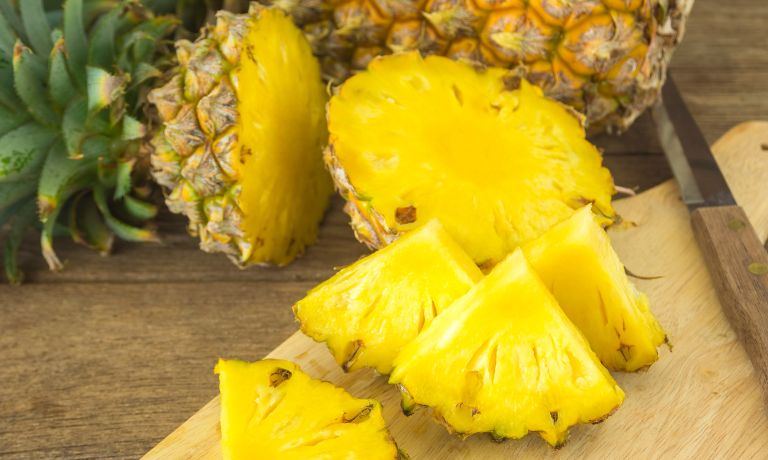
Mangoes
Mangoes are a tropical fruit that is native to southeastern Asia.
They have a sweet and tangy flavor and come in various colors, from green to yellow-orange.
Mangoes are popular for their health benefits, as they contain dietary fiber, antioxidants, and several vitamins and minerals.
Additionally, they are low in calories, making them an excellent substitute for high-calorie desserts.
They are often cooked with other ingredients, such as coconut milk, spices, and herbs to create flavorful dishes.
Mangoes also make delicious additions to smoothies and fruit salads.
Mango can be used in baking and as a topping for ice cream, yogurt, or even pancakes.

FAQs
What Kind Of Fruit Is Similar To Persimmons?
Many types of fruits are similar to persimmons in both taste and texture.
The most popular varieties include apples, pears, apricots, peaches, plums, nectarines, kiwis, mangoes, cherries and figs.
Does A Persimmon Resemble A Tomato In Flavor?
No, a persimmon does not resemble a tomato in flavor.
Persimmons are sweet and have a unique taste that most people find pleasant.
The taste of persimmon is often described as honey-like or reminiscent of caramelized sugar.
What Distinguishes Fuyus From Persimmons?
Fuyus and persimmons have many similarities but also some key differences.
Fuyus are a variety of Japanese persimmon that is flatter in shape and has edible skin that does not need to be peeled before eating.
In contrast, the popular Hachiya persimmon is rounder and must be peeled before eating.
Fuyus are also sweeter and less astringent than Hachiyas so they can be eaten while still firm and crunchy.
Conclusion
Persimmons are unique and delicious fruit that is not always easy to find.
However, several options to substitute for persimmons can be used in recipes for a similar flavor and texture.
These alternatives include Sharon Fruit, Pears, Quince, Plums, Pineapples and Mangoes.
Each fruit has its unique flavor and texture, allowing for various dishes and flavors.
These fruits are also healthy options that provide many vitamins and minerals.
With the right recipes and ingredients, anyone can enjoy the taste of persimmons without looking far.

